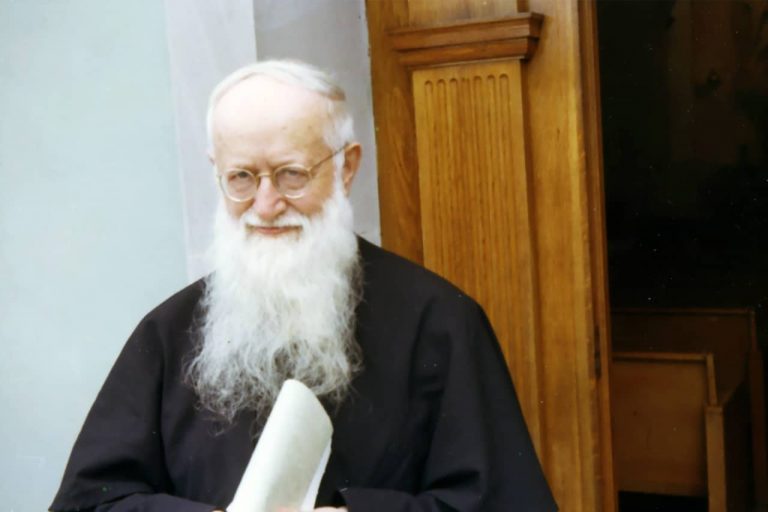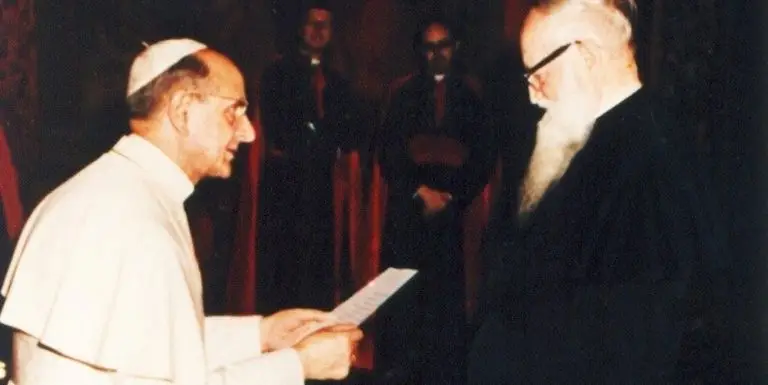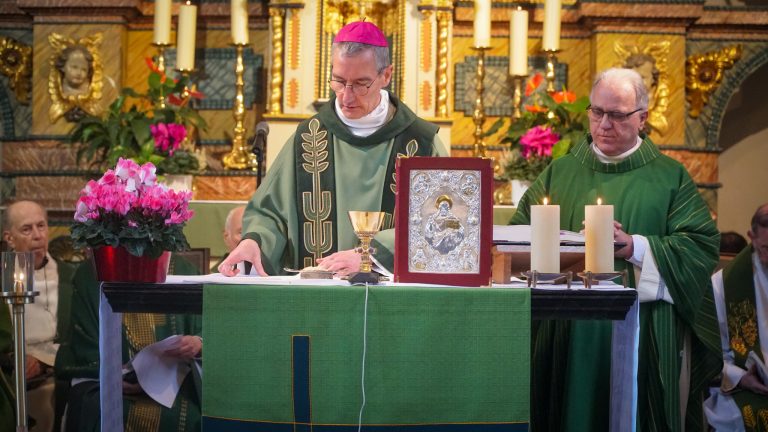On July 8, the Schoenstatt Movement remembers the priestly ordination of Father Joseph Kentenich, which took place on July 8, 1910. Father Kentenich’s priestly trajectory has contributed significantly to the contemporary context, both in general and for priests in particular, by proposing and living a new model of priesthood based on a close bond with Christ and a profound Marian devotion.
In this context, without pretending to exhaust the content of his message to those who share his charism, we highlight three characteristics of the priesthood that we consider relevant for today’s challenges:
Priestly fatherhood
Priestly fatherhood is one of the essential missions of priestly ministry, but it has often been neglected in recent times. The priest is called to exercise the role of “Father of a people”, as emphasized by Father Kentenich, who warned of the risk that the lack of paternal reference could lead to the absence of God’s presence (cf. KENTENICH, My Philosophy of Education, p. 30 ff.).
According to Kentenich, the loss of the filial feeling prevents God from expressing his paternal action in fullness towards those who do not consider themselves children. From this perspective, it is essential to promote a current of filiality directed towards the Father (cf. KENTENICH, Abba Joseph, p. 51).
Although many people share this responsibility, it is particularly incumbent upon priests, whose mission is to serve as a natural bridge between people and God the Father. Priests have the mission of preserving the paternal image through their spiritual fatherhood, becoming a point of reference for those who no longer recognize this figure in today’s world.

Marian priesthood
What characterizes a Marian priest? Considering that the priest is an alter Christus (another Christ), it is worth asking how it is possible to admit Marian traits without compromising the Christocentrism of the priestly vocation or his masculine identity.
According to Fr. Kentenich, “the ideal of the altera Maria (another Mary) is also appreciated and familiar to priests and the male members of the total Family”, and he explains that “the perfect image of man must also have traits of Mary”. The priest, as Mary’s instrument, needs these qualities, for he must possess the firmness of a diamond and, at the same time, show maternal tenderness, reconciling severity with delicacy and strength with gentleness.
This balance is attributed to the Mother of Priests, since, as Fr. Kentenich, “the Mother of God possesses the charism of spreading around her an ideal, purified and supernatural atmosphere, which keeps us perpetually young and enthusiastic, moldable and open; which preserves in us the sense of perception of all that is genuine, divinely great and ideal, which strengthens it and makes it active in us” (cf. KENTENICH, Marian Instrument Spirituality, pp. 116-118).
Encouraging the mission of the laity
Father Joseph Kentenich stood out as a priest who believed in the laity at a time when there was little interest in lay protagonism. He anticipated several proposals of the Second Vatican Council, especially regarding the valuing and empowerment of the laity for an incisive apostolic action in the world.
In Milwaukee, he addressed the concept of the “Church of the new margins”, understood as the “People of God on the way”, overcoming the traditional conception of a pyramidal structure marked by rigid hierarchies and little participation of the faithful. He proposed a Church configured as a family community that respects the plurality of states of life, functions, and cultures observed in the international movement. His perspective was that of a simple Church, without a desire for power in the face of the world, but well-organized and characterized by the co-responsibility of all its members, each one carrying out their mission.
As Fr. Kentenich himself pointed out in a homily delivered at St. Michael’s parish in Milwaukee: “Part of this new image of the Church was respect for the dignity and talents of the so-called laity. In the past, the laity were peripheral figures cared for by the clergy; today, however, they must be experienced as full members. A full member lives the full responsibility of the Church’s mission in the environment in which he/she finds himself/herself, assuming it as his/her own. Wherever he finds himself, there the Church is present”. (Cf. FELDMANN, God’s Rebel, p. 179).
These characteristics represent only some of the diverse orientations that Fr. Joseph Kentenich proposed to priests throughout his career, marked by an intense pastoral work with the clergy.
A legacy that still resounds today
Father Kentenich’s legacy extends beyond his time. It continues to resonate today in communities that value the role of the laity, recognize the richness of diversity, and foster collaboration among the various vocations within the Church. His visionary approach laid the foundation for a more dynamic and co-responsible understanding of the Church as an institution: no longer a static grouping, but a living organism in continual renewal, where each person is called to contribute from his or her gifts and charisms.
Encouraging the active commitment of all the faithful, Father Kentenich fostered responsible autonomy and community discernment, and valued dialogue, reciprocal listening, and the exchange of experiences. In this way, the Church became increasingly a place of welcome, growth, and mission, faithful to its original identity as a pilgrim community of faith in solidarity.
The proposals of the founder of Schoenstatt continue to inspire generations of Christians to assume with creativity and courage their role in the construction of a Church that is open, participatory and committed to the challenges of the present and the future without losing sight of the centrality of the Gospel and the maternal closeness of the Mother of God, a model of service and availability.
Dr. Marcelo Cervi
Secular Institute of Diocesan Priests of Schoenstatt
Translation: Sr. M. Lourdes Macías



